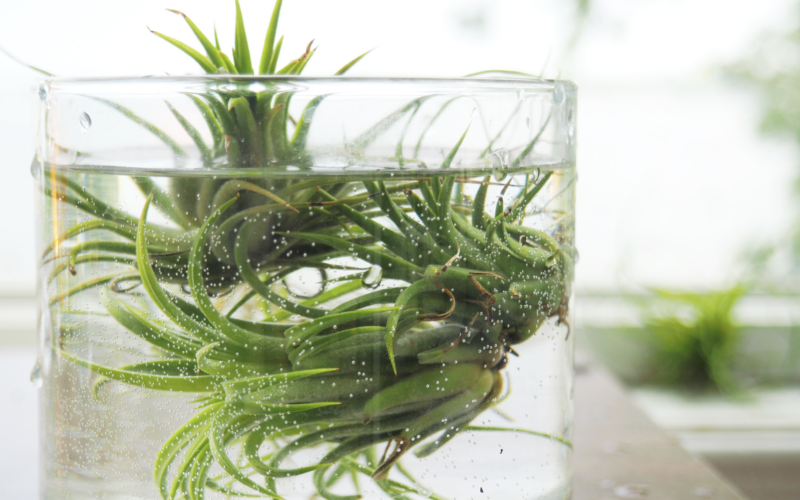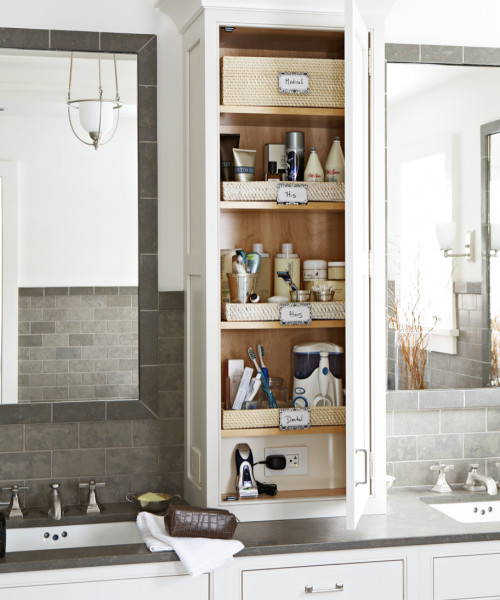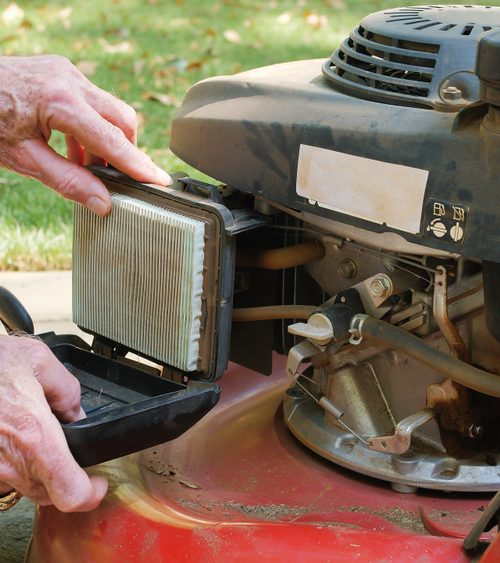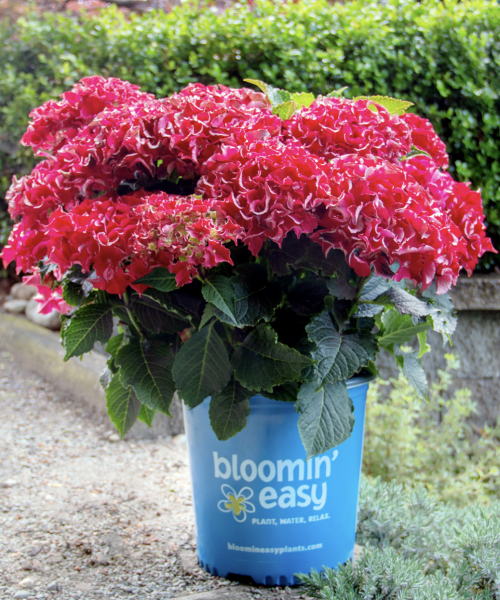By Rita Pelczar | BHG.Com
Troy Warren for CNT #HomeGarden
Keeping these unique houseplants properly hydrated can be tricky. Give your air plants exactly the right amount of moisture with these expert tips.
There’s a good reason air plants have their name. They don’t have roots like other plants do for absorbing water from soil. Instead, air plants get water and nutrients from the air around them. These plants use tiny, hair-like growths on their leaves, called trichomes, to soak up the moisture they need from humidity and rain water. Despite this neat trick, air plants usually require regular watering when grown as houseplants. That’s because the air in our homes is typically very dry (and hopefully rain-free). To water your air plants properly, follow these expert tips on the best method to use, how often to give your air plants water, and what kind of water to use.
Soaking Method
The best way to water air plants (Tillandsia) is to submerge them in water. “There are many different species of air plants, but they can all be watered using the submerging technique,” says Aaron Steil, Horticulture Extension Specialist at Iowa State University.
First, fill a sink or bowl with room-temperature water, deep enough to completely submerge each air plant. Let your plants soak for 30 to 60 minutes. After removing your plants from water, gently shake off excess moisture. Then, set each air plant upside down on a clean cloth or paper towel to drain for an hour or two. Setting your plants in front of a small fan on a low setting will also help them dry off completely. Any moisture pooling at the base of the leaves may cause rot, so this drying step is critical.
How Often to Water Air Plants
“How often you water your Tillandsia depends on the humidity; and whether you have a xeric variety from an arid region, or a mesic variety from a humid climate,” says Annie Schreck, Director of Botanical Research at Mountain Crest Gardens, a nursery that specializes in air plants and succulents. Xeric air plants may require less-frequent soaking than mesic types. “As a general starting point, we recommend giving your air plant a 1-hour soak once a week,” says Schreck.
Other than watering on a set schedule, you’ll know if your air plant needs water by taking a close look at the leaves. The edges of each leaf will curl inward along its length as the plant uses up moisture. And although thirsty air plants don’t wilt as obviously as other plants do, the whole plant will feel limp.
The Best Water for Air Plants
The best water to use for air plants is rain water; pond or aquarium water will also work, because they all contain some nutrients. Regular tap water is okay, too; but first let it sit in an open container overnight. “This allows chlorine to dissipate, and the water to reach room temperature,” says Steil. Too much chlorine causes leaf tips to turn brown. Steil discourages the use of softened or distilled water. “The salts in softened water can damage the leaves, and distilled water is too ‘pure’ and won’t provide any of the nutrients the air plants need,” he says.
In addition to water, air plants absorb nutrients through their leaves. “Usually, they get nutrients from rain water that drips down through trees, so it’s important to feed domesticated Tillandsia with an air-plant-specific fertilizer,” says Schreck. Add a little fertilizer to the soaking water once a month, according to label directions. Or, after soaking your air plants, spritz them with a pre-mixed air plant fertilizer ($7, Etsy) once a month.
Misting Air Plants
Misting air plants with a spray bottle or a mister ($10, Target) a few times a week can supplement your soaking routine, but does not usually supply enough consistent moisture on its own. This technique can come in handy, however, for plants attached to a support or for blooming air plants (see below for more details). It’s also useful for Spanish moss, which is an air plant that is a bit more difficult to water by soaking, according to Steil, who cautions, “it cannot stay wet for extended periods of time.” Because of this sensitivity to excess moisture, Spanish moss is “one of the few air plants some gardeners have better luck with frequent [and I mean very frequent, like every day] misting,” he adds.
How to Water Air Plants Attached to Wood or Other Support
Air plants are sometimes glued to a decorative support. They can do quite well in this situation, but it can make watering the plant a little awkward. If possible, soak the air plant without submerging the wood or other material it’s attached to, and be sure to invert the plant afterwards so it dries thoroughly. Alternatively, Schreck suggests, “passing just the plant under running water 2 to 4 times a week, or misting it thoroughly 3 to 7 times a week.”
Watering Air Plants with Flowers
Flowering air plants pose another issue with watering. “Most air plants will need more frequent watering while in bloom; just be sure the water doesn’t accumulate in the center part of the plant, causing rot,” says Steil. Wetting the flower will shorten the bloom period. The best watering option is to submerge the leaves, but keep the flower out of the water. “If this is too difficult, mist the leaves frequently, but avoid wetting the flower. You can also hold the air plants under gently-flowing water, being careful to only wet the leaves and not the flowers,” says Steil.
The bottom line when it comes to watering air plants is to soak the leaves every week to 10 days. Then, always make sure to let the plants completely dry upside down before returning them to their regular spot.


































